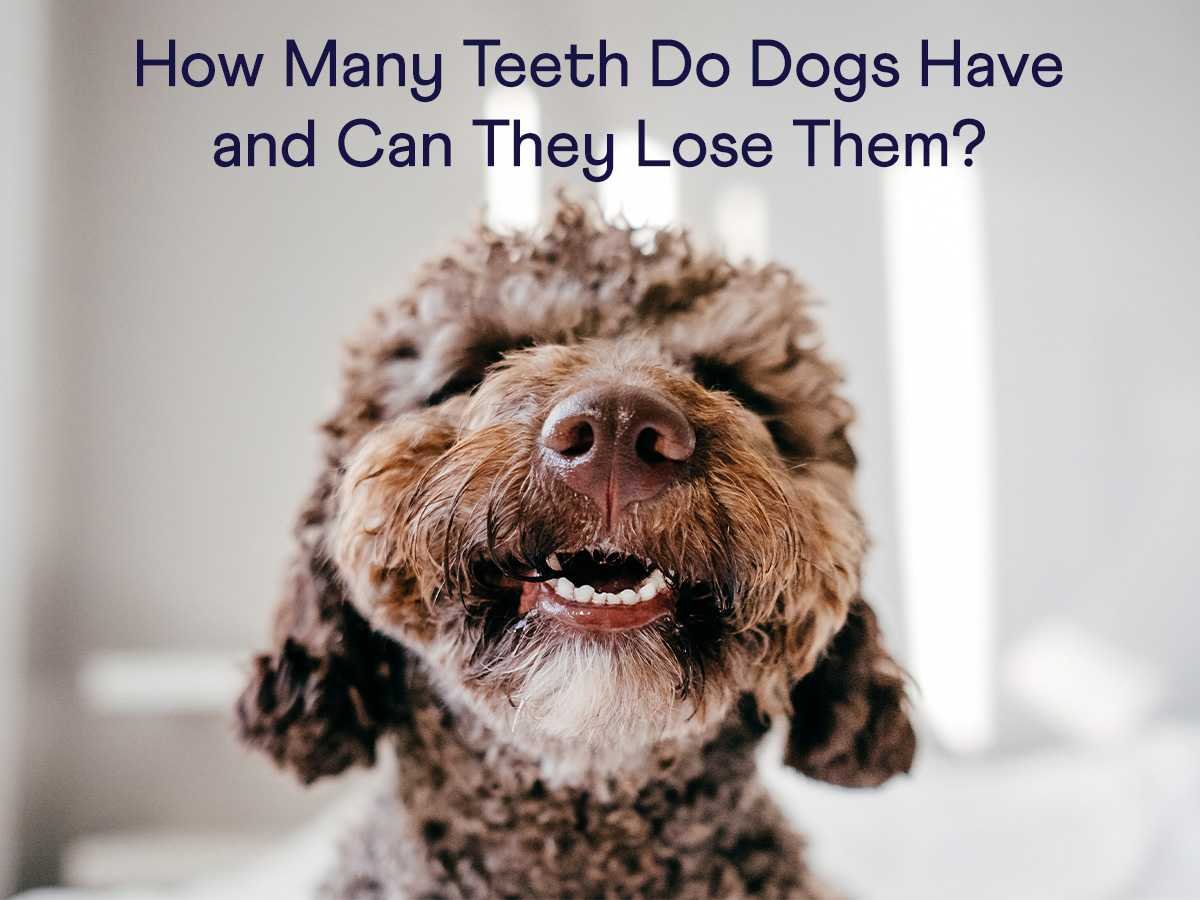Dog Teeth: How Many Teeth Do Dogs Have & Can They Lose Them?
Dogs have 28 teeth as puppies and 42 teeth as adults. Read on for the lowdown on the evolution of your dog’s teeth and dental health throughout their lifetime.
Table of Contents:
Dogs are just like us when it comes to their teeth — they lose them just like humans do. A canine will go through two sets of teeth throughout its life, with each set containing a different number of teeth.
Read on for what you need to know about dog teeth and dental health.
Puppy Teeth vs. Adult Teeth
Just like human babies, puppies don’t have any teeth when they are born — just gums. Puppies grow deciduous teeth, or “baby teeth,” between two and four weeks. There are 28 total and teeth are fully in by about ten weeks old. These little teeth are temporary and eventually fall out to make room for their adult teeth.
Deciduous teeth are typically razor-sharp. Scientifically, this is to make up for their lack of jaw strength. Puppies' jaws aren’t strong enough to support their chewing at this stage of life, and their baby teeth compensate for that.
Those tiny, sharp teeth help them break down solid foods and chew on treats, toys, and bones. Think of deciduous teeth as tiny replicas of their adult teeth. It’s important to supply your young puppy with proper chews and toys to safely help their tiny teeth fall out.
Puppies start losing their baby teeth at around four months of age. By five to six months, they’re well on their way to gaining all of their adult teeth! Obviously, this rate is much faster than humans.
Your canine companion should have all 42 of their adult teeth at around eight months old. This is ten more teeth than a human being, whose number sits at 32. The baby teeth that don’t fall out have to be extracted, as they can eventually decay and cause further dental problems for your pooch.
The age approximations listed above are pretty consistent, but it should be noted that dogs’ dental growth really comes down to their breed and their development. Some dogs (particularly toy and small breed dogs) tend to take longer to develop puppy and adult teeth.
The Four Types of Dog Teeth
Your canine companion has four different types of teeth in their mouth.
Incisors
Incisors are the tiny teeth that sit in the front of your dog’s mouth. Out of all your dog’s teeth, the incisors look the most human-like. There are 12 total, six on the top and six on the bottom.
They are primarily for nipping, biting, and self-grooming. They also serve as tools for cutting and tearing food. If your dog develops a dental issue and needs one of their incisors removed, they can generally live without them.
Canines
Canines are the pointy teeth that sit on the top and bottom of your dog’s mouth. They, too, serve as tools for cutting and tearing food. Their purpose is to puncture and hold a good grip on whatever is in their mouths, like food, bones, and chew toys. They give your dog an excellent advantage during a game of tug! There are four total: two on the top and two on the bottom.
Premolars
Premolars are located behind your dog’s canine teeth. There are 16 total: eight on the top and eight on the bottom. Dogs sometimes chew their food on the sides of their mouths using their premolars. These teeth are not as pointy as canines but are pointier than their molars.
Molars
And last but not least, the molars. They are found in the back of your dog’s mouth (just like humans). They are used for grinding food, so they are flat. There are four on the top and six on the bottom, so ten total.
The Importance of Dog Dental Health
Your dog’s dental health is just as important as your own. You’ll find that if you’re not careful with your dog’s teeth early on in their lives, they might be faced with painful, dire, expensive dental issues down the road. Whether they are a puppy or a senior dog, there are plenty of ways to take care of their teeth.
Schedule Regular Cleanings
Schedule regular teeth cleanings with your vet to keep your dog’s teeth polished and plaque-free. While this might seem costly, it’ll be triple the rate when your dog needs their teeth extracted, or worse, your dog contracts a life-threatening condition or health issues like heart, liver, or kidney disease.
Dental Chews
Dental chews are a great way to keep your dog’s dental care in check. Talk to your vet to see what products they recommend for your dog. Dental sticks and chews may help prevent bad breath, minimize plaque build-up, and keep gums healthy.
Nutrition and Supplements
A proper nutritional plan and the right pup supplements are a great way to keep your dog’s teeth strong and healthy. Consider a multivitamin with CoQ10, which can help support dental health.
Generally speaking, dry food is better for your dog’s teeth than soft food. Hard kibble will work to scrape away tartar from your dog’s teeth as they are eating. You can also put a range of solutions into your dog’s water that keeps plaque from building up. Talk to your vet for a recommendation.
Daily Toothbrushing
Right after you brush your teeth, brush your dog’s! At-home dental care is a great option for keeping their teeth clean on a daily basis. Daily brushing will help keep harmful bacteria from building up on their teeth and gums.
Make sure you are using a soft-bristled or finger brush. This might come as a challenge at first, but with practice, you’ll get the hang of it and so will your pooch.
IMPORTANT: Use toothpaste designed specifically for dogs as some ingredients in human toothpaste, such as the natural sweetener xylitol, are toxic to canines.
Potential Dog Dental Issues
While dog dental issues can vary based on breed, they are usually a result of poor dental hygiene. The good news is that these issues are mostly preventable. Here are some potential dental problems you might run into if your dog’s teeth aren’t kept up with.
Periodontal Disease
Periodontal disease is an infection and associated irritation of the tissues surrounding your dog’s teeth. It is the most common disease affecting domesticated canines, with two-thirds of dogs over the age of three years old suffering from it. It’s caused by plaque and tartar build-up, leading to diseased gums and decaying teeth.
Bodily Infections
Bodily infections can also occur as a result of periodontal disease. If untreated, PD can lead to severe health implications that not only affect their teeth and gums, but their internal organs as well.
Bacteria resulting from dental problems put your dog at risk for eye issues, organ damage, jaw fractures, oral cancer, oronasal fistulas, and tooth abscesses. Poor oral hygiene can also lead to diabetes and heart disease.
Cracked or Broken Teeth
Lack of dental care can lead to weak teeth, which can cause them to crack or break. This could result in a painful situation for your pet. Again, daily teeth brushing, bone and dental health-supporting supplements, and dental chews can help maintain healthy teeth.
Summary
Regularly scheduled cleanings, dental chews, proper nutrition, the right supplements, as well as the daily at-home cleaning of your dog’s teeth, can help prevent periodontal disease, bodily infections, and cracked or broken teeth.
Suitable oral care will keep your dog’s 42 adult teeth intact and keep them smiling throughout their lifetime, so get to brushing!
Sources:
Dog Dental Care: How Many Teeth Do Dogs Have? | American Kennel Club
How Many Teeth Do Dogs Have, and Can They Lose Them? | PetMD






